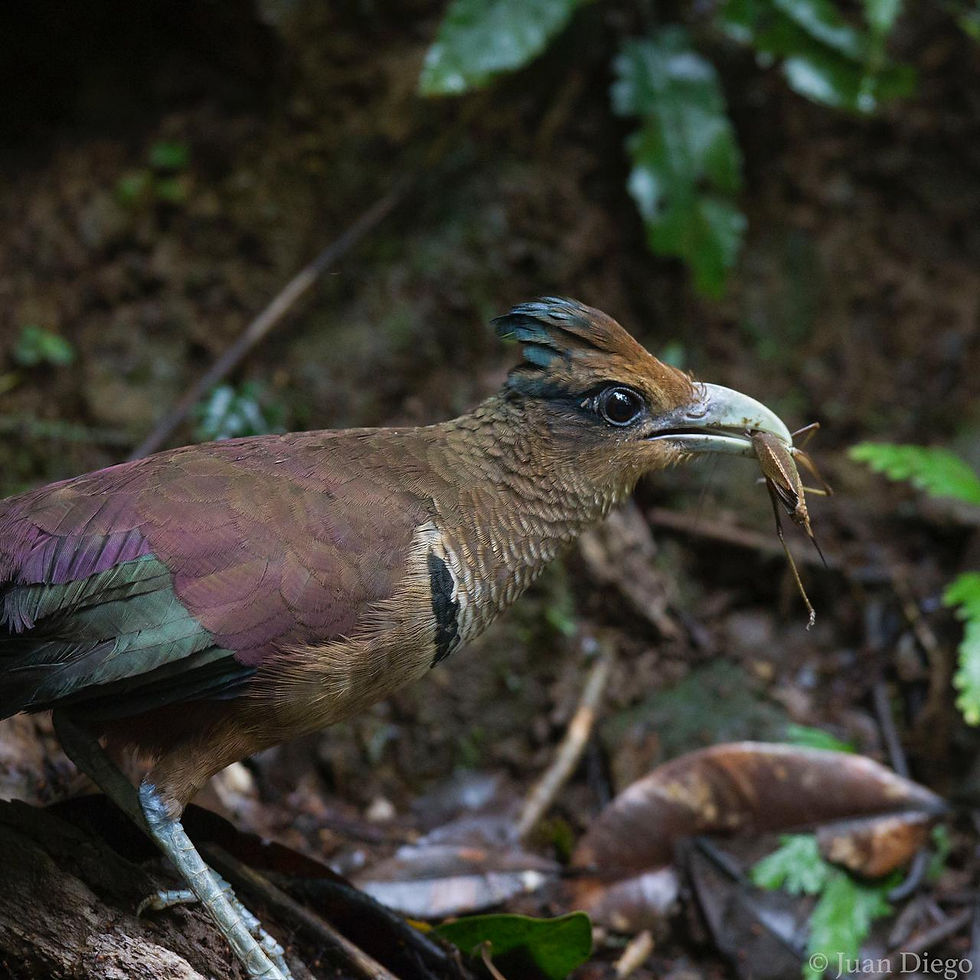What is a Lifer?
- Lifer Tours
- Apr 8, 2018
- 4 min read
What is a Lifer?
For some, life is about facing new challenges. For nature enthusiasts, and specially birdwatchers, life is also about having nature encounters you have never seen before and hopefully unsual to our daylife routines. This not only to make you feel special but also to make you feel “useful” as you are truly getting the essence of the old times explorers…. Feeling for a second what Karl Hoffman, Castulo Zeledon, Alexander Skutch, Paul Slud and others felt everyday in front of the endless thrill of adventuring into an unknown magical nature world.

In this context a Lifer is the slang designated to describe this subject to discover, most of the time a bird, or any other creature or behavior you and others have never seen before.
But why is good to have Lifers in mind? Because birding can be predictable and even routinary sometimes but this new potential birds in our minds can make our quest more meaningful and exciting. This “life-first encounter” will make you hike the extra mile and drive longer and bumpier roads for hours in order to the simply possibility to put your binoculars in front of something completely new for your mind. Discovering a new variety of colors, textures and behaviors that will not only amaze you but also push you to visit and explore places you will never have another reason to visit and most people will never even know those places exist... this, at the end, is the main ingredient that can build an adventure of a lifetime.
It doesn't matter if your new place is the garden of your neighbor or the Talamanca mountain range of Costa Rica.
Just two days ago, our guide Juan Diego, gave us a good example of what we are talking about after driving and boating for hours to find for his customers (and for himself!) a really fine Lifer on our Costa Rica Target Birding Tour. The stunning White-crowned Pigeon.
This Pigeon is an amazing creature and maybe one of the most wanderer Pigeons of all the Caribbean as it is well evolved to fly between Islands crossing big areas of salt water looking for appropiate feeding sites near the coast. Normally resident breeder mainly in the Bahamas, Cuba, Jamaica and Antigua. It also breeds in smaller numbers in other Caribbean islands but in those places is restricted to a habitat combination between mangroves and forest together, an habitat is scarcer nowadays.

Once they got to Tortuguero town after three hours of driving and one hour on boat they did what most good local guides will do. Put their ego down and humbly beg their local contacts the last spot where they saw it. All of the local guides suggested the bird is not there anymore as the last time they saw it the bird was feeding on a Melastomatacea near the town center and as the tree is not producing more fruit the pigeon was not there anymore since a month or two.
With the hopes down the group denied to give up so early and took a walk to the gate of the National Park in where they found an old friend of Juan Diego, Andres. Andres is a Park Ranger that spends lots of time in town and by instance knew some extra sightings. And indeed he said he saw the pigeon by coincidence just three days ago (smiles came back to their faces) on a Melastoma tree near the beach and he was going to a meeting close by there. Of course, Juan Diego and team decided to stick on him and follow every step until he pointed out the tree. After arriving at the site they waited for 10 minutes and nothing was there. Looking up and with not much hope left, Juan Diego spotted some movement near the top and Bingo! A black medium size bird movements materialized into a nice White-crowned Pigeon. The bird was resting possibly after a feeding time and it behave shy to us.

As they approched to the bird it deneid to show well as it was hiding higher and deeper among tree branches of near by Beach Almond trees. So they decided to hide on a house close the site and waited a few hours until the Pigeon went back to foraging on the Melastoma tree to pick up some fruits and they were finally able to get a few videos in its natural behaviour.
A truly remarkable experience. After watching its normal behaviour they walked away leaving the pigeon there for other birdwatchers to come.
The following two days we explored the amazing system of wetlands of Tortuguero and spotted other interesting creatures as Brown-capped Tyrannulet, Yellow-margined Tyrannulet, King Vulture flying over and four Sungrebes close to a apparent nest (one female with beautiful color markings on face).
Among the many memorable moments in this trip we got a pretty impressive one at the very last minute in the boat out of Tortuguero when they saw a Great Green Macaw chasing a Yellow-thorated Toucan away from its nest. Toucans are know to steal bird eggs and chicks but the big Great Green Macaw is not the typical bird you want to mess around! In other words the chase for this magnificient lifer brought us to other magical experiences that they will never seen if is not by pushing themselves to the limits of the "Lifers".











Comments